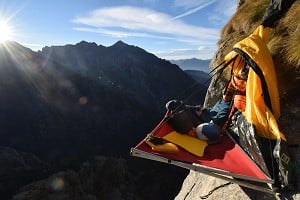
The huge granite walls of Tsaranoro have been a popular adventure climbing destination since the late 1990's.
The cliffs are fairly close together, and tower above the tiny village of Andonaka, a simple and small settlement in the wild heart of Madagascar.
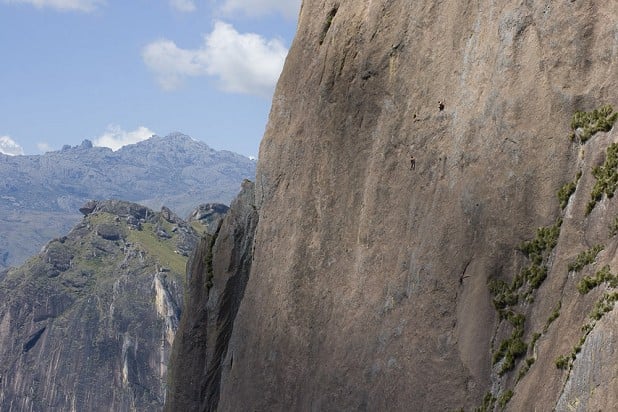
The climbs are long, but mainly tackled in a single day push. The rock is extremely compact, meaning that no natural protection can be placed. This has led to a ground up bolting ethic, producing quite run-out routes on generally slabby ground, but luckily the bolts are mostly in good condition.
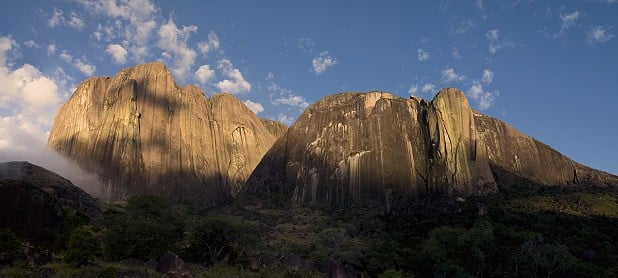
The left most of the major walls pictured above is Tsaranoro Atsimo. This is home to a route called Mora Mora, which has been free climbed by Adam Ondra at F8c, making it one of the hardest climbs in Madagascar. See this UKC News Item for more info. The largest of the walls just to the right is Tsaranoro Be, and has many superb routes, up to 800m in length, the best of which could be the 20 pitch Gondwalaland (F7c). These routes are tough to climb in a day, an early start is advised, or you will be bivvying!
Right again is Tsaranoro Kely, a 600m wall that has one of the original and best routes in Madagascar. Out of Africa (F7a, 580m) is easily climbed in a day by a competent team and offers pitch after pitch of perfect technical climbing, mainly around F6b+ in standard. It is a world classic, first climbed in 1998 by a team that included the famous Michel Piola. Piola is responsible for many super-classic routes the world over and is known for being one of the most proficient 'lead bolters' anywhere. If you see his name on a first ascent list, you can hedge your bets that the route will be brilliant! For many visiting teams Out of Africa is the highlight of their trip.
The bright yellow cliff of Karambony stands proud directly above the campsite and is the smallest of the major walls at only 450m. But it is almost plumb vertical and is virtually featureless for its entire length, making it a very unique piece of rock.
Perhaps the most famous route of Madagascar climbs the very centre of this wall. Tough Enough (F8b+) is one of the hardest multipitch challenges in the world and has recently been free climbed in a day by Adam Ondra - see this UKC News Item.
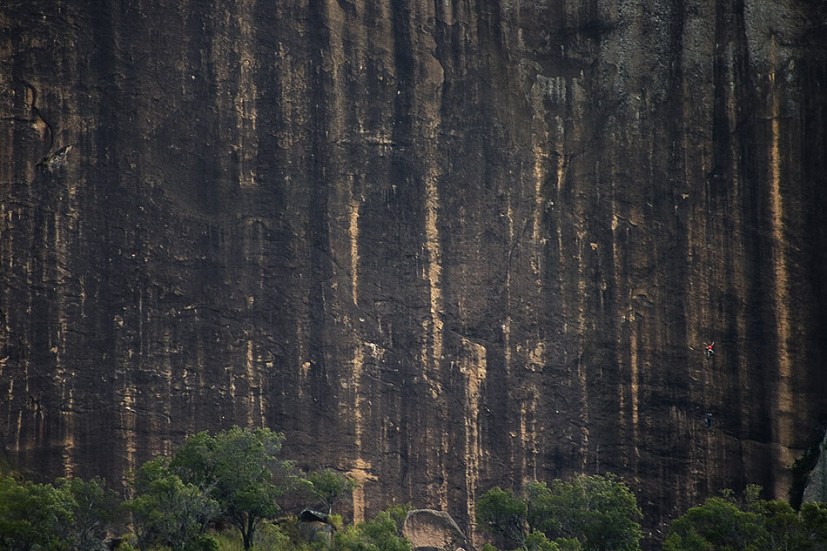
British climber James McHaffie made a strong attempt on this line during our visit back in 2008. you can read more in this UKC News Item.
Right again is the black cliff called Lemur Wall. The routes here are around 5 pitches in length, generally in the F6 grade range and make an ideal warm up mission for those who want to get a feel for the rock.
The Lemur Wall steepens up on its right side and our team managed a short first ascent in this area called Yellow Fever. Whilst not of the magnitude of Tsaranoro Be, we found it to be bold, technical and quite unique. Photo below.
There is almost unlimited bouldering in the valley, if you are prepared to explore. Thousands of granite boulders litter the hillsides, many of which have been climbed on by teams who need to rest after big wall exertions.

New Routes
For new routes in Madagascar you will need to bring a drill and bolts. You will need to be adept at bolting on lead, using sky hooks. There are no lines to be climbed on natural gear, the faces are blank and do not have cracks. The do have good flakes for skyhooks and are generally quite slabby, so the ground-up bolting works well.
Most of the plumb lines have been climbed already, much of the remaining rock looks very hard indeed.
The landscape is stunning and the area is a national park, with many hiking trails. The photo below shows the view looking away from the cliffs up to the nearby peak of Mount Dondy, which is home to some low grade, very long mountaineering routes. The potential for exploration on these other cliffs is huge.
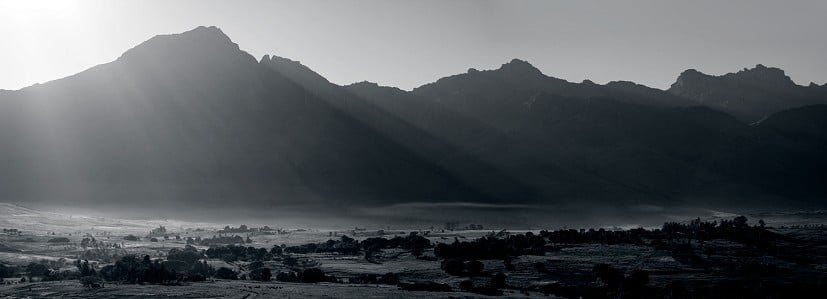
The area is teeming with wild life, from huge red spiders (scary!) to mischievous lemurs, following your every move.
Video: Tough Enough
Logistics
When to Go
The most popular time to visit and climb is in September and early October. In July the temperatures can be very low, below zero on the summits, but the weather is usually fairly dry. November to March can be very hot and have a lot of rain. We visited in April 2008 and had hot weather, but it was still climbable. If I was to return I would opt for September, but Gilles Gautier who runs Tsaranoro Camp recommended June, July & August; however, he did express that this year he thought the weather patterns were slightly warmer.
Hoiw to Get There
You need to fly to the capital: Antananarivo. The climbing area is a full day's drive from Antananarivo, with the final few kilometres being on a dirt track. We organised all of our travel through the camp site Camp Catta, who arranged a bus for most of the way and then picked us up in a 4x4.
Accommodation Advertise here
No Premier Listings found in this area
There are loads of hotels in Antananarivo, you may want to spend a few days there soaking in the sites.
When at Tsaranoro itself there are limited accommodation options. Camp Catta is situated just below the cliffs, with a full range of options from camping in your own tent to staying ina fairly posh bungalow. There is a more basic campsite in the village too.
Instructor/Guides Advertise here
No Premier Listings found in this area
Food
Madagascar in general is a developing country and has basic food at a reasonable price. Camp Catta has high standard food at European prices. It has a bar and all amenities. Water needs to be treated in some way. Bottled water is available at Camp Catta.
Gear and Supplies
Climbing gear is not available, so bring everything you need. You can buy food in the nearby villages, or you can eat at the camp.
Outdoor Shops Advertise here
No Premier Listings found in this area
Other Activities
Hiking in one of the most beautiful parts of the world, with excellent trails and huts to stay in. It is also a popular paragliding area.
- SKILLS: Building Fast Belays When Multipitch Sport Climbing 9 Nov, 2016
- SKILLS: Abseil Knots Explained 2 Oct, 2016
- FEATURE: Colm Shannon's Deserted DWS Heaven - Irish West Coast 7 Aug, 2016
- SKILLS: Acclimatising for the European Alps 5 Jun, 2016
- Terra Unfirma! Adventures on the Lleyn Peninsula 1 Jun, 2016
- VIDEO: Fiesta De Los Biceps 8 May, 2016
- REVIEW: Evolv Shaman 2016 18 Mar, 2016
- REVIEW: Doug Scott - Up and About 2 Feb, 2016
- ARTICLE: 12 Climbing Adventures That Won't Break The Bank 26 Jan, 2016
- DESTINATION GUIDE: 10 Routes to Climb in Chamonix in Winter 20 Jan, 2016




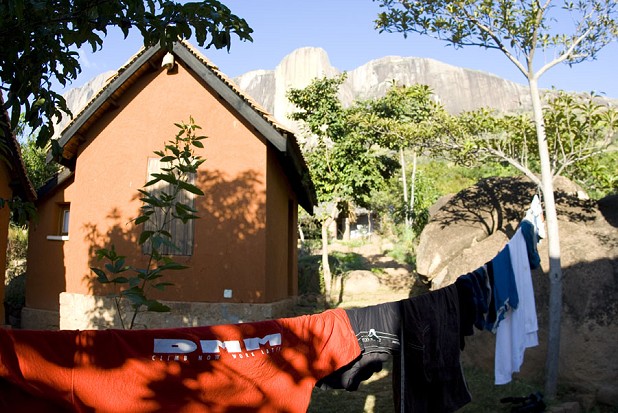
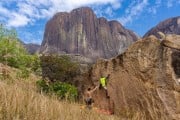

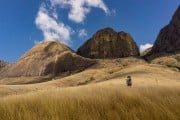

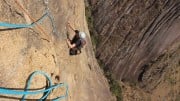




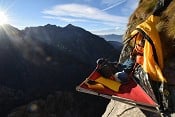
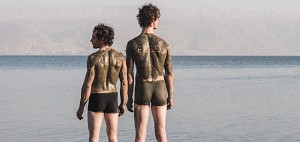

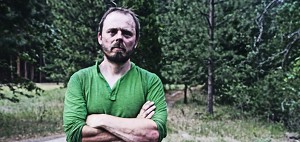



Comments